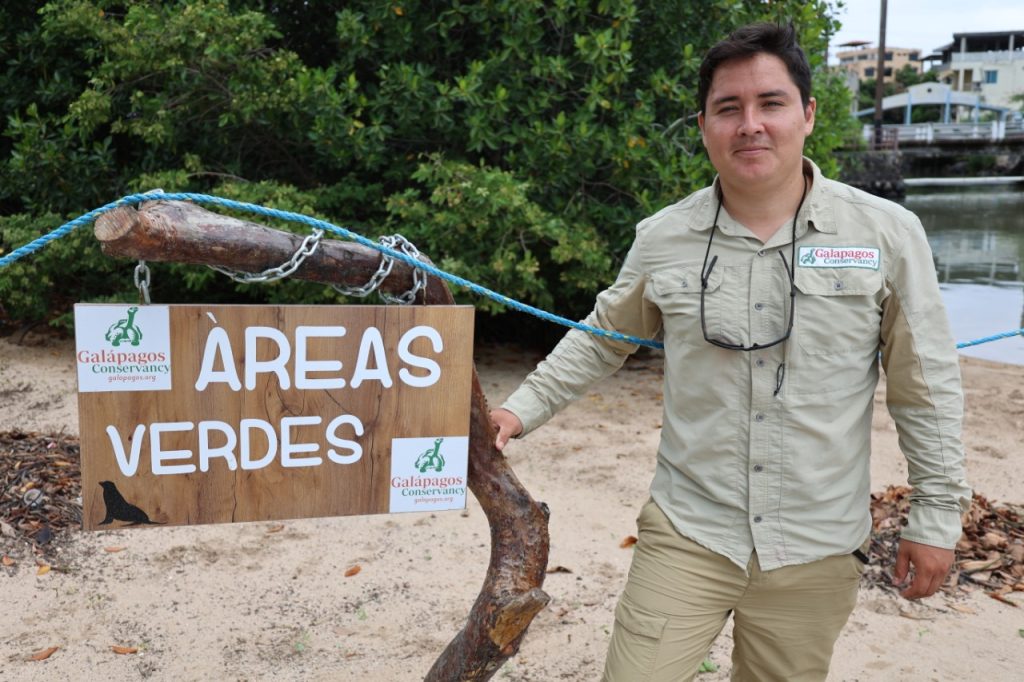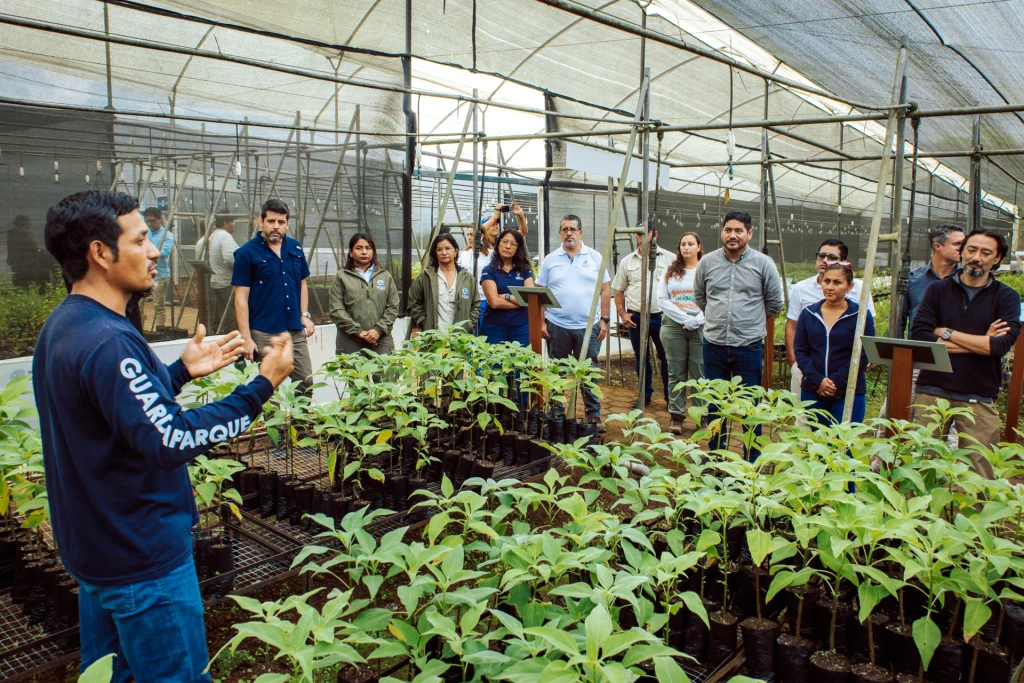Pablo is now a Galapagos Conservancy research scientist associate and works on his own conservation projects. He joins the challenge of caring to the Galapagos Islands, and becomes an example for future generations of young Galapagonos.
Why did you decide to become an environment manager?
I became an environmental manager after solving environmental problems on the island and seeing serious flaws due to insufficient preparation. This led to a wide range of environmental administration and science.
Why your particular interest in recovering Playa de los Marinos?
This is the beach where my family grew up, and it was also where my ancestors grew up. It is sad to see that the area was home to a lot of marine life and human-animal coexistence. But we can do something. It is important to set an example for others. I have been doing this for many years. The goal is still to make it possible for future generations to experience what I was unable to.
Why is it called Playa de los Marinos? What’s the story behind this name?
Its name derives from its geographic location. It is close to the naval base, and was used for sailors’ training. It was renamed Playa de los Marinos after its continued use by the institution. The difference is still remarkable. Any activity other than ship repair has been ruled out due to the contamination.
What species are found in this area?
Playa de los Marinos provides the ideal habitat for the largest Sea Lion colony in the archipelago. It also serves as a nesting spot for Marine Iguanas and Blue-footed Boobies.
What was the project you were involved in to save this beach?
To establish a baseline list of species and determine their current situation regarding contamination, I began by surveying the environment of the site. We collected data about soil and water contamination with low pH, which directly impacts the health of the species. We identified garbage collection as a priority and recommended the proper use of containers. Additionally, we talked to owners of fishing boats and tourist boat operators who were enthusiastic about the maintenance of the site.
What are your most notable achievements?
It was possible to serve as an example for the island’s environment authorities. This was possible because of highly trained staff and a well-managed budget.
How is Playa de los Marinos now?
The mangrove area at the beach was restored, cleanup efforts were conducted, and garbage cans with the correct identification were placed to stop trash being dumped in this area. This is a long-term job, and boat repairs continue to impact the beach. It is good that more institutions and individuals are now doing cleanup work throughout the sector. This is a positive step that was taken up by the Playa de los Marinos restoration project.
What’s left to do at the beach?
Although the work is not permanent, I want to highlight three important things.
- It is important to divert sewage from the beaches.
- Take down the boats from this beach and find another spot for boat maintenance.
- You must clean the beach thoroughly.
How can the community get involved in this effort to save this area?
It is important for the community to get involved. Positive attitudes are key to ensuring the beach is well-maintained. You can help your children learn and show them how to care for the beach and the environment in general.
Do you have any management suggestions for this site?
You can take more effective actions to treat sewage and boats. This sector should be monitored for waste and machinery. To protect the Sea Lion colony, it is important to avoid domestic animals.
What do you think about helping to restore the beach you grew up on?
It’s a rare feeling to be able help in some way with the recovery of a site that is so personal for so many. Knowing that Galapagos Conservancy exists to fill environmental gaps is also a great honor. We have much more work to do in this area and across the island. We hope to continue to rely on the support from GC.
Today we are witnessing the rise of a new generation environmental professionals. Many keep their ideas and projects to themselves for different reasons. But, we have to take action. I invite all those with conservation projects or future initiatives to Galapagos Conservation, where they can find the support and confidence to grow and exploit their strengths. Conservation will be more rewarding if you do more.


